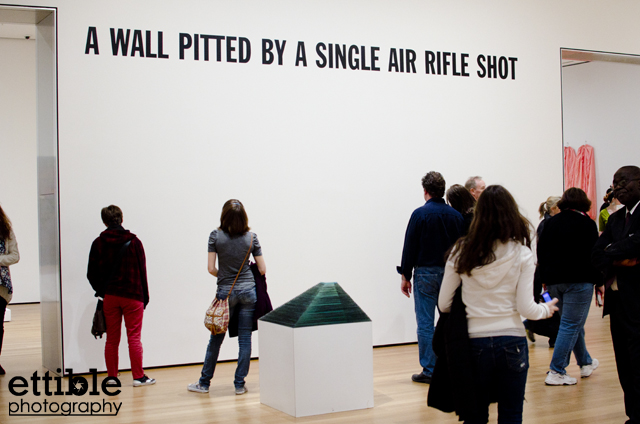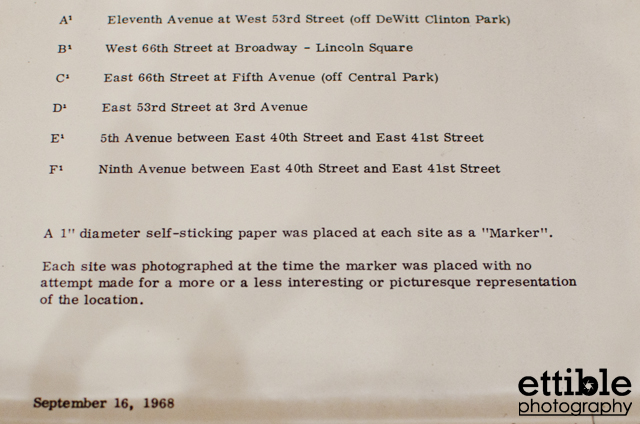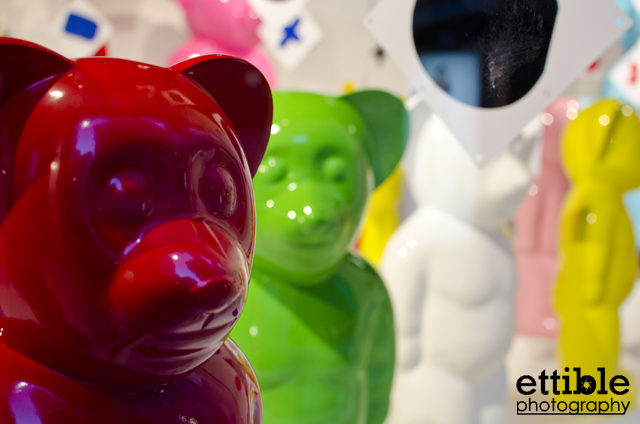I love art, and I love to make fun of it, too. When my friends Ellie and Kinard came to visit late last year, we went to MoMA one afternoon, and before we left, we had a long conversation with my roommate about who gets to decide what art is. I think his basic argument (and I’m sure he’ll lambast me in the comments if I’m wrong) was that the individual observer gets to decide; if it’s art to you, it’s art. I think Ellie‘s basic argument was that nobody gets to say that something isn’t art. I think Kinard‘s basic argument was, “Let’s go to Shake Shack again.” Just kidding; that was me.
But yeah, I’ll defend your art to the death, even if it involves throwing soup on a statue. Still, here are some of the pieces at MoMA that gave me pause:

Belgian Lion by Marcel Broodthaers
The placard for this said, “Found object in frying pan.” It was under glass, which makes it all the funnier to me. ART.

These are evenly-spaced orange squares. ART!

There was a great story behind these that I don’t remember. Some benefactor said he’d give some artist, like, 10 bajillionty dollars to paint him an original piece every year or something, and this is what the artist gave him. And he totally didn’t murder the artist after receiving the first one. ART!!

I don’t think there was actually a rifle shot in this wall. AAAAART!

I absolutely love this description: “Each site was photographed at the time the marker was placed with no attempt made for a more or less interesting or picturesque representation of the location.” NOT-EVEN-TRYING ART!

I actually kind of like this one.

And this one, too.
But here’s some more ART:
Robert Barry’s 90mc Carrier Wave (FM) “consists of radio waves generated by a hand-engineered FM radio transmitter installed in this gallery but hidden from view”. INVISIBLE ART!
While all of this is a little laughable, it’s all a little wonderful, too. And really, I’d rather be too willing to call something art than not willing enough. Take a look at Mark Rothko’s No. 10 and tell me you want to be the person described in the last sentence of the MoMA placard next to the piece:
“The irregular patches of color characteristic of the artist’s Multiform paintings of 1948 seem to have settled into place on this canvas, which Rothko divided horizontally into three dominant planes of color that softly and subtly merge into one another. Between 1949 and 1950 Rothko simplified the compositional structure of his paintings and arrived at this, his signature style. He explained, ‘The progression of a painter’s work, as it travels in time from point to point, will be toward clarity: toward the elimination of all obstacles between the painter and the idea, and between the idea and the observer.’ MoMA acquired No. 10 in 1952. The painting—the first by Rothko to enter the collection—was so radical for the time that a trustee of the Museum resigned in protest.
ART!


































